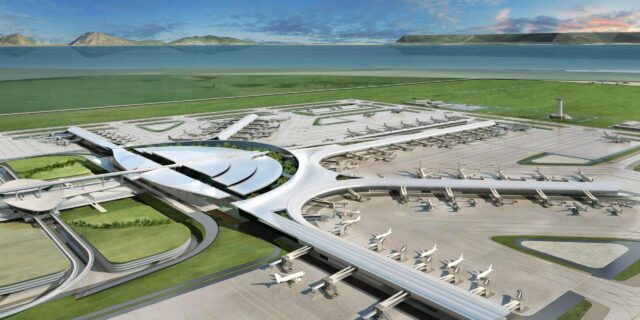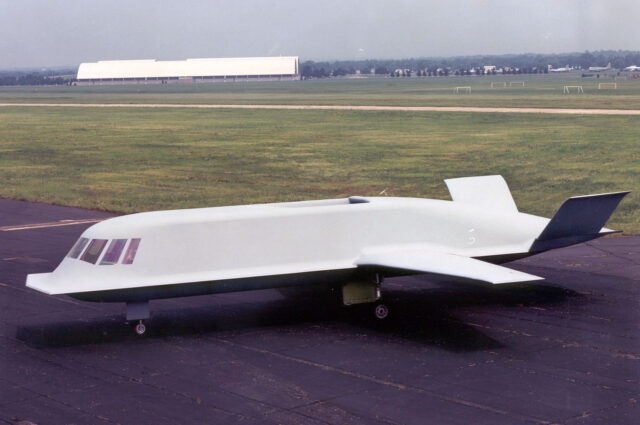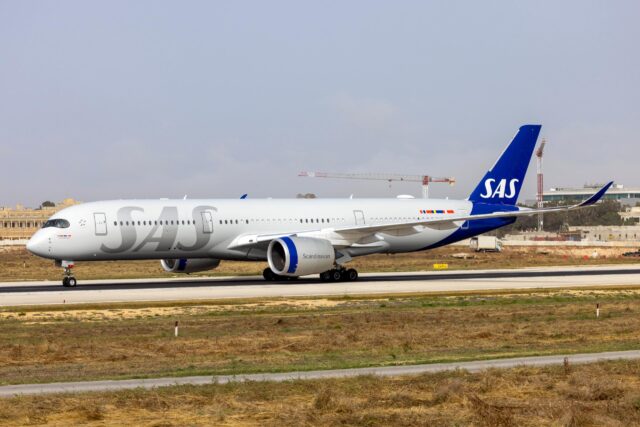Halifax Airport tests ‘WALL-E with a map’ as robots get jobs at airports worldwide

August 25, 2025

Halifax Stanfield International Airport has begun a months-long pilot of two “passenger experience robots” to help passengers find their way around the terminal.
“By embracing technology solutions like these, we are prioritising airport efficiency and innovation, with a touch of fun in the terminal,” says Halifax Stanfield’s marketing and customer-experience lead, Tiffany Chase. “Think WALL-E with a map — and they’re pretty adorable, too.”
Halifax trials customer service robots
Built with local start-up Maritime Robotics, the bilingual bots combine voice recognition with a touchscreen. They can pull up flight and amenity information, and will physically escort travellers to selected locations within a geofenced area. For destinations outside their roaming perimeter, the robots provide a static map.

The robots are positioned pre-security in Centre Court and Arrivals, and will augment existing staff and volunteers during peak times, the airport said.
World’s airports put robots to work
Airports worldwide have experimented with service robots for nearly a decade, in various specialised roles.
Munich Airport and Incheon International Airport stand out for testing several different robot applications.
Munich Airport robot trials
In 2018, Munich Airport trialled “Josie Pepper,” a humanoid guide introduced with Lufthansa, who answered questions and gave directions in Terminal 2. It was an early European test of AI-powered, public-facing robotics in a complex passenger environment. Since that trial, Munich Airport has introduced other robots, including:
- Ottobots: Two autonomous robots from robotics startup Ottonomy operating in the Customer Service Centre, gates and baggage claim areas in Terminal 2. Similar to Halifax, the robots provided passengers information such as “tax refund” and “lost and found” and other Lufthansa Airlines and Terminal 2 services. While the bots have no voice, passengers could get chat assistance from the bot by scanning a QR code with their smartphone. The chat also enabled self-service options like flight information, rebooking, and refunds. The robots also distributed drinking water, stored in their containers.
- Munich Airport and Lufthansa tested two autonomous wheelchairs from manufacturer WHILL in their Mobility Service. The trial aimed to improve support for travellers with limited mobility while testing the use of digital technologies and robotics in passenger operations.
- Jeeves the Snackbot by Servus offers snacks and drinks for sale at Munich Airport. The Snackbot has a touchscreen to help customers place orders and accepts cashless payment via Apple Pay, Google Pay and major credit cards.
Incheon Airport robot trials
Incheon International Airport leaned into robots to enhance wayfinding and hospitality for international travellers through a collaboration with Doosan Robotics.

- The Airstar Robot is a multi-lingual automated airport guide with voice recognition and artificial intelligence. Once provided with a flight number, the Airstar robot directs travellers to the correct counter and can even escort them. It can assist with carry-on luggage restrictions, duty-free shop locations, or boarding gate directions. Customers can even use the robot to send commemorative photos via email or SMS.
- The baggage-carrying Air Porter Robot scans boarding passes and can follow customers to their gate or take the lead if they need directions.
- The Air Ride Robot transports elderly or disabled customers to their boarding gates.
- The Air Dilly Robot offers food delivery to customers waiting at a boarding gate. Customers scan the QR codes displayed on nearby seats to order food and drinks.
Robots help keep airports clean and convenient
Other airports have deployed robots to take on repetitive tasks or create new convenience services.
- Cincinnati/Northern Kentucky (CVG) rolled out “Ottobots” to deliver food and retail orders to gates.
- Dallas–Fort Worth has piloted “ZiGGY,” a mobile EV-charging robot for parking facilities.
- Hamad International Airport in Doha deployed autonomous UV-C disinfection robots in high-traffic areas.
- Heathrow has introduced fleets of autonomous cleaning robots or “cobots” and UV disinfection units as part of tech-led cleaning programs.
- All Nippon Airways and Panasonic tested self-driving electric wheelchairs at Tokyo Narita in 2019 to help passengers with reduced mobility navigate large terminals independently.
- Toronto Pearson Airport put autonomous vehicles to work on airside support and inspections.
- Zurich Airport is rolling out robot shuttlebuses to help passengers move around.
Robot adoption in aviation remains uneven
Robots are a help, not a threat, to airport workers. In fact, the US Airport Cooperative Research Program notes that service robots succeed best when they complement, rather than replace, staff.
Still, compared to other industries, such as manufacturing, robot adoption in aviation remains uneven. Robotics sits below other IT priorities for many aviation executives, as analysis by Lufthansa Innovation Hub’s TNMT (citing SITA’s Air Transport IT Insights 2023) found.
Only a few airlines have planned or deployed major robotics programs. Airports have been more active where there’s a clear operational case (cleaning and inspections) or a revenue and passenger experience upside (delivery, retail, and wayfinding).
With its latest trial, Halifax Airport is joining other innovative airports and giving robots a more active role in helping passengers enjoy their journey.
















